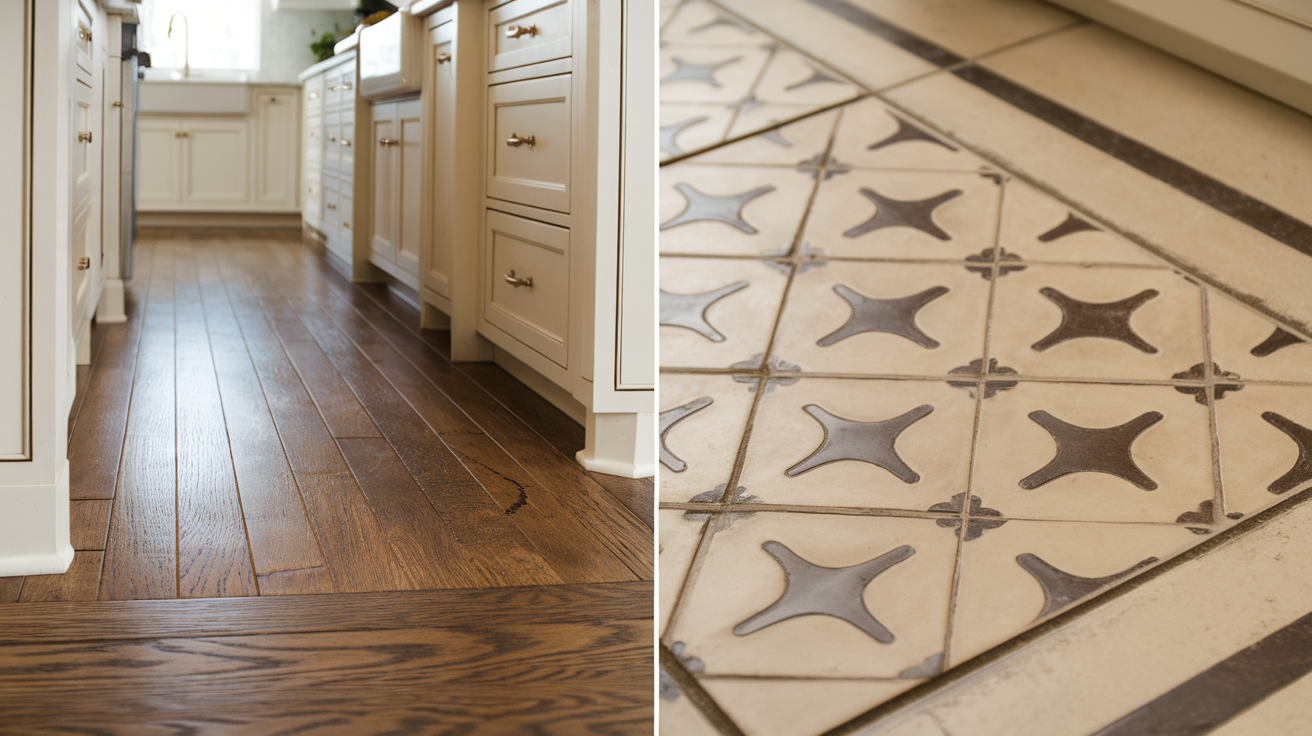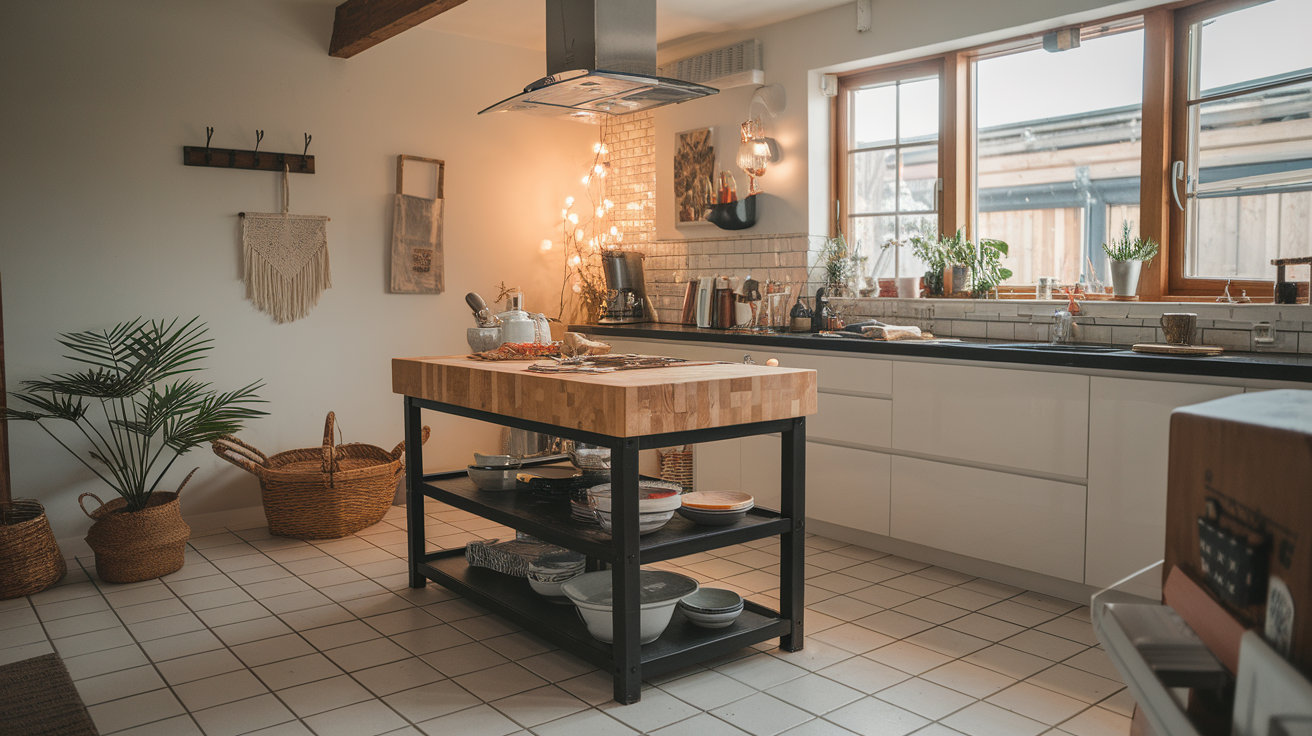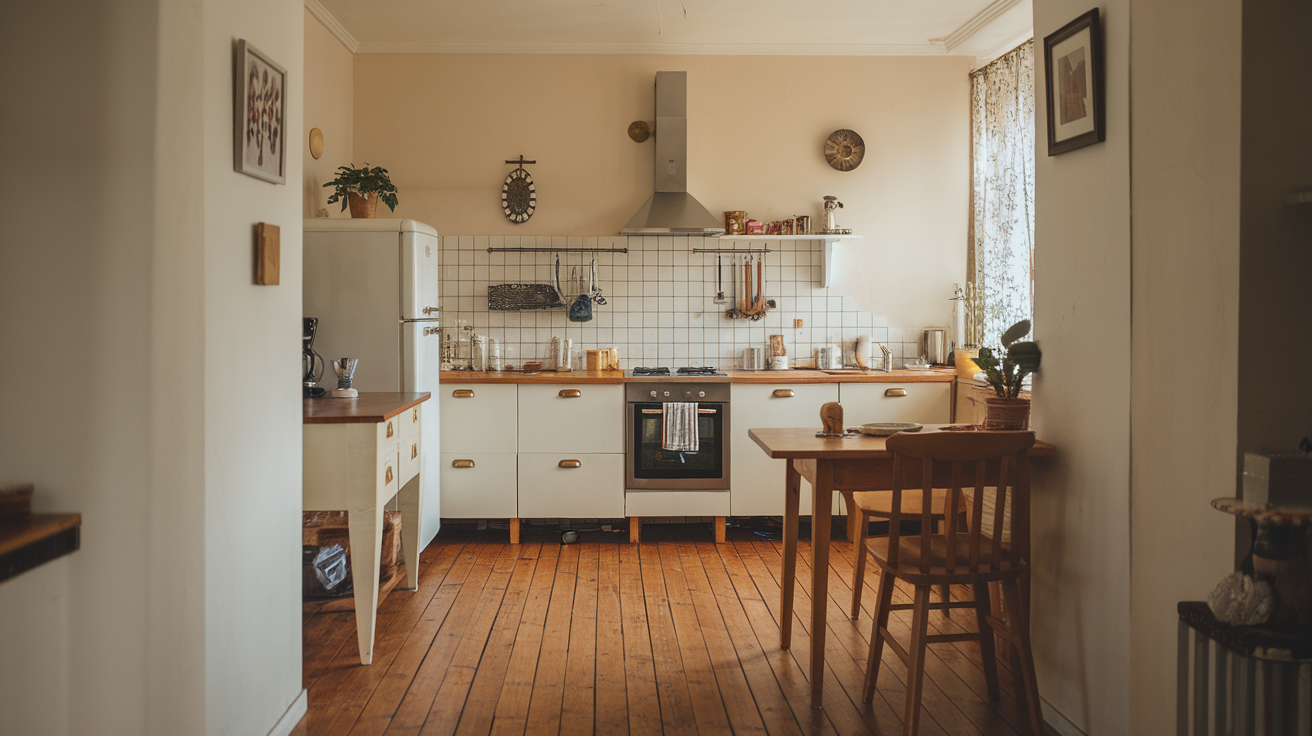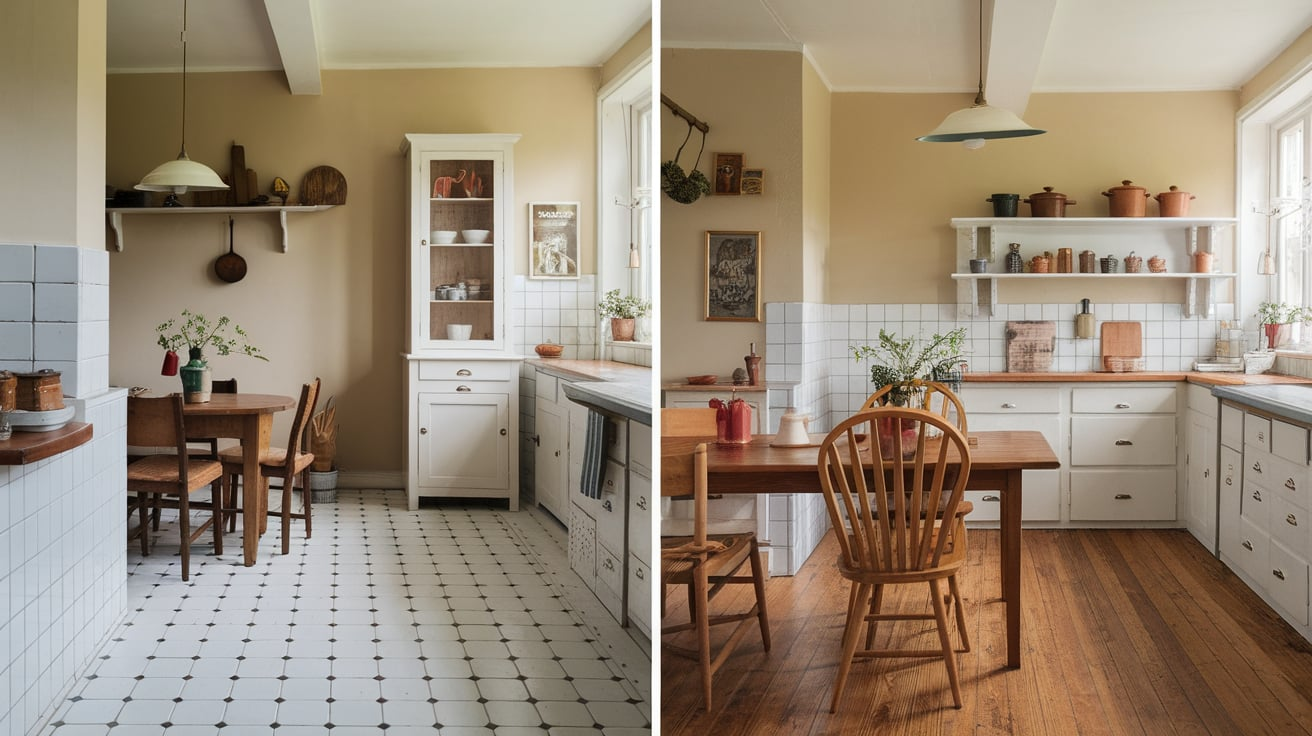When it comes to choosing the right flooring for your kitchen, two options always come up: tile and hardwood.
Both have their pros and cons, and picking the right one depends on your personal preferences and needs.
I know it can be tough to decide between the two, so in this blog, I’m breaking down everything you need to know.
We’ll look at the durability, cost, maintenance, and design options for each, so you can make an informed choice.
If you’re remodeling your kitchen or building a new one, understanding the differences between tile and hardwood will help you find the perfect floor.
Why Kitchen Flooring Matters?
Choosing the right kitchen flooring might not seem like a big deal at first, but it really matters more than you’d think.
The kitchen is one of the busiest rooms in the house – mine definitely is!
It’s where we cook, eat, walk in with muddy shoes, and even hang out sometimes. So the floor takes a beating every day.
That’s why it’s important to pick something that not only looks good but also holds up to all that traffic. You want something strong, easy to clean, and safe for your family.
I’ve learned that making the right choice early can save a lot of trouble later.
Your flooring decision can make your kitchen more comfortable and stylish for years to come.
Comparing Tile and Hardwood Flooring

Let’s take a closer look at how tile and hardwood flooring compare in the kitchen. I’ll go over all the key points to help you decide what’s best for your space.
1. Durability and Maintenance
Tile is very durable. It stands up to spills, heat, and heavy foot traffic without much wear. It’s also easy to clean – just sweep and mop.
But grout lines can get dirty and may need to be sealed. Tile rarely chips or cracks, but if it does, repairs can be tricky.
Hardwood is strong but a little more sensitive. It can scratch, dent, or get stained if you’re not careful. Water is a bigger problem – it can cause warping.
You’ll need to wipe up spills quickly. Hardwood needs more upkeep, but it can last for years with proper care.
2. Cost and Installation
Tile is usually cheaper than hardwood, especially ceramic. You can find budget-friendly options, but prices vary by type and design.
Installing tile takes time and skill, so labor costs may be high if you hire a pro. DIY is possible, but it can be tricky for beginners.
Hardwood tends to cost more upfront, especially for solid wood. Engineered wood can be a bit cheaper. Installation is harder and usually needs a professional.
While the price is higher, many homeowners feel it adds more value to the home in the long run.
3. Aesthetics and Style
Tile comes in many colors, shapes, and patterns. Some tiles even look like wood or stone. It’s easy to match your kitchen style, whether you like modern or classic.
But tile can feel a bit cold or “hard” in its look, depending on the space.
Hardwood gives your kitchen a warm, cozy feel. Every plank has its own unique grain, which adds character. It works well with farmhouse, rustic, or traditional styles.
You can also stain it different shades if you want a custom look.
4. Comfort and Safety
Tile is hard and doesn’t give much support. It can be uncomfortable if you stand a lot while cooking.
It also gets cold in winter unless you use heated floors. Tile can be slippery when wet, which may cause slips or falls.
Hardwood feels softer and warmer underfoot. It’s easier on your legs and feet if you spend a lot of time in the kitchen.
It’s also less slippery than tile, though it can still be slick with spills or polish.
5. Eco-Friendliness
Many tiles are made from natural materials like clay. They’re long-lasting and don’t need replacing often, which helps reduce waste.
However, some tile production processes consume a significant amount of energy. Look for eco-certified tiles if this matters to you.
Wood is a renewable material, especially when it’s harvested responsibly. Some hardwood floors can be refinished several times instead of being replaced.
If you choose FSC-certified wood, you’re supporting better forest practices.
Quick Comparision
| Feature | Tile Flooring | Hardwood Flooring |
|---|---|---|
| Durability | Very strong, scratch & water-resistant | Can scratch/dent, not water-friendly |
| Maintenance | Easy to clean, grout needs care | Needs regular care, may need refinishing |
| Cost | Often cheaper, especially ceramic | Higher upfront cost |
| Comfort | Hard and cold underfoot | Softer and warmer underfoot |
| Style | Many styles, patterns, even wood-look | Natural look, cozy and classic |
| Safety | Slippery when wet | Less slippery, but still needs caution |
| Eco-Friendly | Long-lasting, some eco tile options | Renewable if sustainably sourced |
Pros and Cons: Tile vs Hardwood Kitchen Floors
Every flooring type has its ups and downs. I like to look at the big picture before making a decision. Below are the pros and cons of both tile and hardwood to help you weigh your options.
Tile Flooring
| Pros | Cons |
|---|---|
| Very durable | Can feel hard and cold |
| Water- and stain-resistant | Slippery when wet |
| Easy to clean | Grout may stain and need sealing |
| Comes in many styles and colors | It can be tricky to install |
| Great for warm climates | Not as comfortable underfoot |
Hardwood Flooring
| Pros | Cons |
|---|---|
| Warm and natural appearance | Sensitive to water and spills |
| Comfortable to stand on | Can scratch or dent |
| Increases home value | Needs more care and refinishing |
| Can be sanded and refinished | Usually more expensive |
| Matches many kitchen styles | May need rugs for added protection |
Both flooring options have their strengths, so I always suggest picking the one that fits your needs and kitchen lifestyle best. Use the table as a quick guide when comparing your choices.
When to Use Tile vs Hardwood Floors for Your Kitchen
I’ve found that the best choice really depends on how you use your kitchen. Here’s when I think each flooring type makes the most sense.
Use Tile Floors If

- You have a busy kitchen with lots of spills and traffic
- You want something waterproof and easy to clean
- You live in a warm climate where cool floors feel nice
- You’re okay with harder surfaces underfoot
- You want bold patterns or a modern design
Use Hardwood Floors If

- You want a warm, natural look in your kitchen
- You’re careful with spills and can handle light maintenance
- You want flooring that’s more comfortable to stand on
- You prefer a cozy, classic style
- You’re looking to add long-term value to your home
I always tell friends, go with what fits your lifestyle best. One isn’t better than the other; it just depends on your kitchen and how you use it.
Conclusion
After looking at all the facts, I think the choice between tile and hardwood really comes down to your lifestyle and what you value most in your kitchen.
I love how hardwood brings warmth and a cozy feel, but I also know that tile is a smart pick if you want something tough and easy to clean.
If you cook a lot or have kids and pets running around, tile might be a better fit. But if comfort and classic style matter more to you, hardwood is hard to beat.
I always suggest thinking about your daily routine and how much time you want to spend on care and cleaning.
In the end, both options can look beautiful and last for years – you just have to decide what works best for your home.

